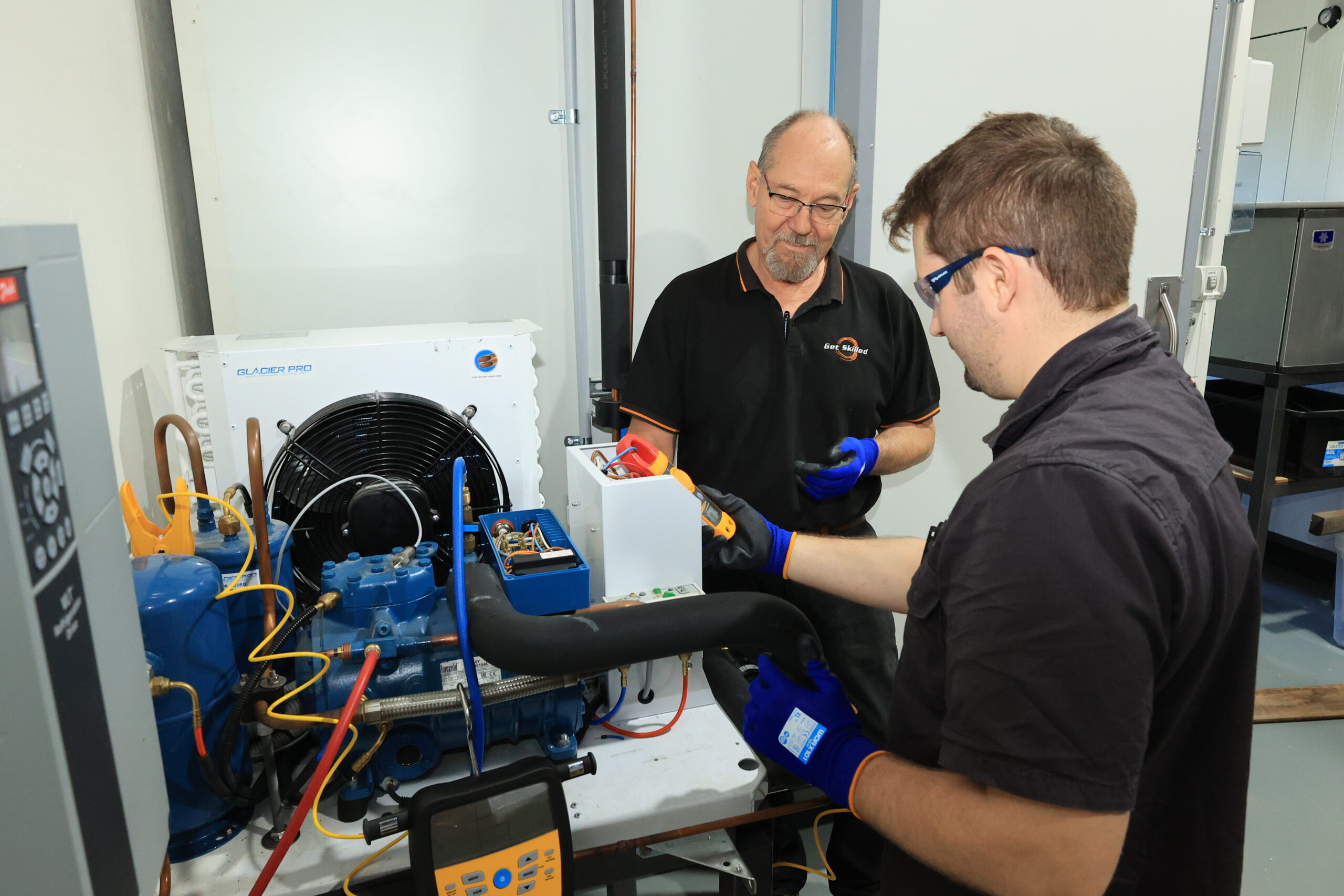Tradespeople are some of the most skilled and in-demand workers in Australia.
As a qualified tradesperson, you’ll have access to work in some of the country’s highest paying industries, like mining, manufacturing and power generation.
If you want to upskill and push your career further than ever, you also have the option of becoming a dual trade tradesperson.
Dual trades hold qualifications in multiple fields. This gives you the skills to perform a huge variety of work, making you incredibly valuable to employers.
There are lots of opportunities available for dual trades. In this article, we’ll see why you should consider becoming a dual trade, as well as what you can do as a dual trade electrician in Australia.
What is a Dual Trade Tradesperson?
A dual trade tradesperson is someone who has completed apprenticeships in two separate trades. Dual trade qualifications usually combine related trades – such as electrical and refrigeration work.
Holding a dual trade qualification can significantly increase your career opportunities and salary potential. It will also simplify the way you work. For instance, a dual trade electrician and diesel mechanic can perform all of the work that’s required to install, repair and maintain commercial diesel generator systems.
This means there’s no need to hold additional qualifications (such as a restricted electrical licence), and you won’t need to partner with another trade to complete a single job.
Dual trades aren’t a new idea in Australia. There are many tradespeople that hold multiple licences. But dual trade apprenticeships are becoming more common, and they’re a fantastic opportunity to expand your career.
Some common dual trade qualifications include:
- Electrician + refrigeration mechanic
- Electrician + heavy diesel mechanic
- Electrician + electrical instrumentation
- Electrician + fitter and turner
- Automotive mechanic + mobile plant mechanic
- Automotive mechanic + diesel mechanic
There are more options available, but these are some of the most in-demand dual trades in Australia.
Dual Trade Electrician and Refrigeration Mechanic
While there are lots of opportunities for dual trades, the most common option is a dual trade electrician and refrigeration mechanic.
In Australia, HVAC and refrigeration systems can only be installed by a qualified person. This is typically handled by a refrigeration mechanic that has completed a Certificate III in Air Conditioning and Refrigeration.
However, HVAC and refrigeration systems often require significant electrical work. Some refrigeration mechanics hold a restricted electrical licence that allows them to perform simple tasks, such as connecting new systems. But more advanced electrical work still needs to be performed by a qualified electrician.
One way around this issue is to obtain a dual trade qualification in electrical and refrigeration work!
This will allow you to carry out advanced electrical tasks that are associated with refrigeration work. That expands your service offering and makes you a much more appealing prospect to employers and customers.
Dual Trade Electrician and Refrigeration Salary
Dual trade electricians and refrigeration mechanics earn an average of $123,609 per year in Australia. This means you can out-earn tradespeople that only hold a single qualification.
For comparison, here’s the average salary for electricians and refrigeration mechanics:
Holding a dual trade qualification also expands your career opportunities. While there’s lots of work for dual trade electricians in metropolitan Australia, you can also find work in high-earning fields like mining and energy generation.
Working in these industries can significantly increase your salary potential, with experienced tradespeople earning $144,000 per year or more.
How to Become a Dual Trade Electrician and Refrigeration Mechanic
To become a dual trade electrician and refrigeration mechanic, you need to complete the following qualifications:
- Certificate III in Electrotechnology Electrician (UEE30820), and;
- Certificate III in Air Conditioning and Refrigeration (UEE32220)
Each Certificate can be earned by undertaking a 4-year apprenticeship. Both Certificates require you to complete classroom-based learning and hands-on training during your workplace placement.
You are typically required to complete two separate apprenticeships to become qualified as a dual trade.
However, there is some overlap between these two qualifications. Recognition of Prior Learning (RPL) may allow you to shorten the apprenticeship period if you have already undertaken relevant units of competency.
For example, a qualified electrician may be able to complete a Certificate III in Air Conditioning in 3 years, rather than 4. You’ll need to speak to your RTO to find out which units of competency you need to complete to earn both qualifications.
Apprentices may be able to find a dual trade qualification and complete both Certificates at the same time.
For instance, the new Dual Trade Apprenticeship pathway in South Australia allows you to complete both qualifications in 1,540 hours, compared to 1,060 hours for a single-trade qualification.
Become Qualified as a Dual Trade Electrician with Get Skilled Training!
Expanding into refrigeration services is a great way to grow your skills as an electrician. While you can undertake training like a Certificate II in Split Air Conditioning and Heat Pump Systems, you can also opt to become qualified as a dual trade tradesperson!
Get Skilled Training is an RTO that helps electricians earn qualification in air conditioning and refrigeration. Our Cert II training is ideal if you want to install split system air conditioning and grow your service offering.
For electricians who already hold a Cert II, we can also help you obtain your Certificate III in Air-Conditioning and Refrigeration. Our Cert III program is ideal for qualified electricians wanting to expand their refrigeration skill set and service offerings (Currently only offered at our Brisbane training location).
Becoming a dual trade electrician takes serious work and commitment. If you’d like to become one of Australia’s most in-demand workers, speak with our team to find out more.




